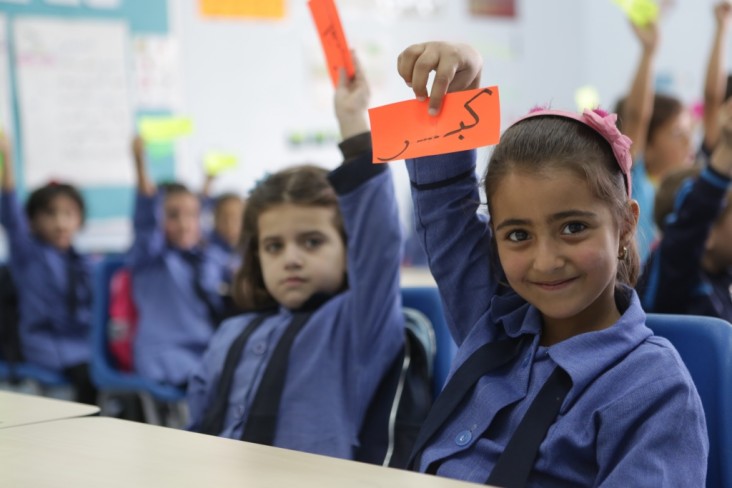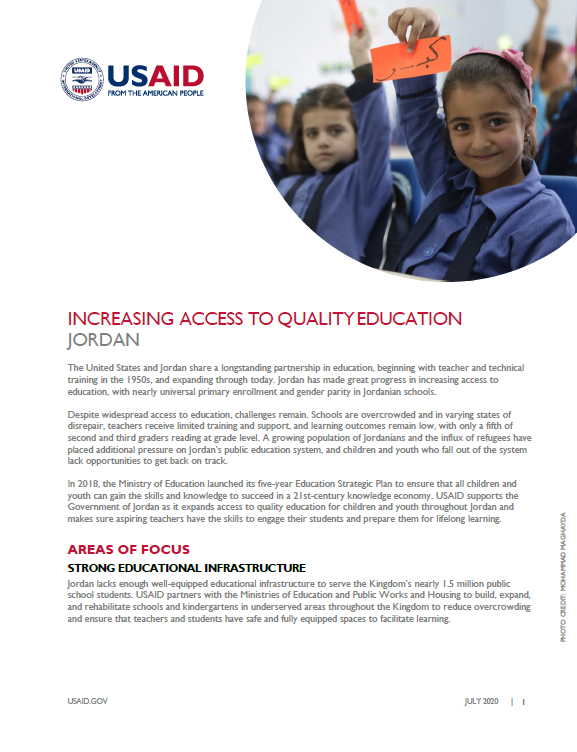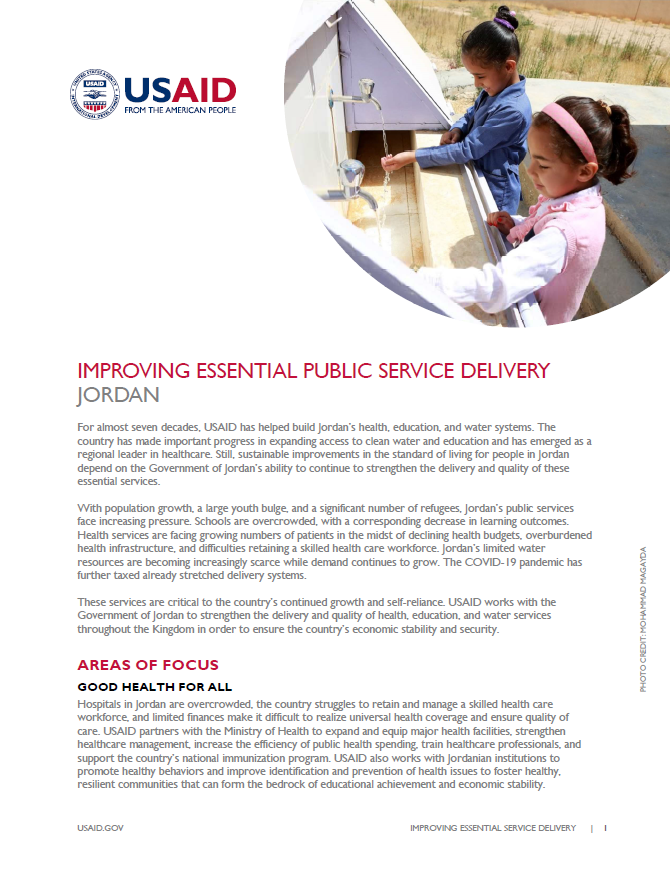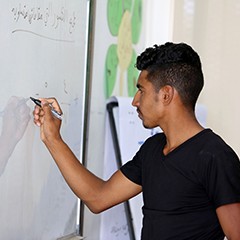Speeches Shim

BACKGROUND
The United States and Jordan share a longstanding partnership in education, beginning with teacher and technical training in the 1950s, and expanding through today. Jordan has made great progress in increasing access to education, with nearly universal primary enrollment and gender parity in Jordanian schools.
Despite widespread access to education, challenges remain. Schools are overcrowded and in varying states of disrepair, teachers receive limited training and support, and learning outcomes remain low, with only a fifth of second and third graders reading at grade level. A growing population of Jordanians and the influx of refugees have placed additional pressure on Jordan’s public education system, and children and youth who fall out of the system lack opportunities to get back on track.
In 2018, the Ministry of Education launched its five-year Education Strategic Plan to ensure that all children and youth can gain the skills and knowledge to succeed in a 21st-century knowledge economy. USAID supports the Government of Jordan as it expands access to quality education for children and youth throughout Jordan and makes sure aspiring teachers have the skills to engage their students and prepare them for lifelong learning.
AREAS OF FOCUS
Increasing Access to Quality Education ![]() (pdf - 224k)
(pdf - 224k)
Improving Essential Service Delivery ![]() (pdf - 386k)
(pdf - 386k)
Strong Educational Infrastructure
Jordan lacks enough well-equipped educational infrastructure to serve the Kingdom’s nearly 1.5 million public school students. USAID partners with the Ministries of Education and Public Works and Housing to build, expand, and rehabilitate schools and kindergartens in underserved areas throughout the Kingdom to reduce overcrowding and ensure that teachers and students have safe and fully equipped spaces to facilitate learning.
Supportive Learning Environments
Children who perform well in school are less likely to drop out or repeat grade levels, and generally face fewer challenges finding gainful employment. USAID works with the Ministry of Education to foster positive learning environments by strengthening reading and math performance in early grades, training teachers to ensure schools are safe and supportive, preparing new teachers to enter the classroom, and encouraging parent and community engagement in the public school system to create a sense of ownership and accountability.
Pathways To Success
Students who fall out of formal education struggle to access safe employment to support themselves and their families. USAID supports non-formal education centers throughout the country to offer out-of-school students the opportunity to complete their education and earn a tenth-grade equivalency certificate. This certificate enables them to pursue vocational training or secondary education.
NOTEWORTHY ACHIEVEMENTS
-
From 2007 to January 2020, USAID expanded equitable access to education by building, rehabilitating, and expanding 377 schools. This work, conducted in conjunction with teacher training, reduces overcrowding in the classroom and ensures accessibility for students with disabilities and safe classroom environments conducive to student learning throughout the country.
-
With USAID support, the Ministry of Education now trains early-grade teachers to improve early-grade numeracy and literacy, which are essential to students’ continuing academic success. A 2019 national early-grade assessment by the ministry revealed a 10 percent increase in grade-level mathematics comprehension and a 5 percent increase in grade-level reading comprehension for second- and third-grade students over the last five years.
-
Children and youth who have been out of school for more than three years are unable to re-enroll in Jordan’s formal education system. USAID’s 40 non-formal education centers give them a second chance, with 37 percent of graduates re-enrolling in the formal education system. Of current participants, 53 percent plan to continue their education and 29 percent plan to enroll in vocational courses after graduating.
-
When the COVID-19 pandemic caused a nationwide school shutdown, USAID supported the Ministry of Education to procure equipment to produce digital distance-learning content, create video lessons, and coach teachers and parents to help children in kindergarten through Grade Three learn through lessons on television and digital platforms. USAID delivered workbooks to students from 874 schools in rural and under-resourced areas of Jordan, in addition to the schools in all of the country’s Syrian refugee camps, so that students who did not have online access could continue their education.





Comment
Make a general inquiry or suggest an improvement.